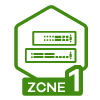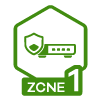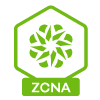Does the XGS1250-12 have/use active cooling?
About a month ago I purchased a pair of XGS1250-12 Ethernet switches and, while there appears to be a fan port on the backs of the switches, I don't actually hear or feel them running. When I put them into service they operated at uncomfortably warm temperatures. Updating firmware from v1.00 to V2.00(ABWE.0)C0 helped a little. I resorted to a passive cooling solution (a GT-610 video card heat sink with a little thermal paste and a strip of acrylic auto body tape) and they're both operating in a zone where I'm comfortable with them but it's barely ASHRAE A2 standard at this point (about 95 Degrees Fahrenheit) in an A1 environment. So I guess my question is; Is the XGS1250-12 thermal management working as expected for the Zyxel team? Because my experience is that these switches need additional cooling and the fan appears to do nothing at all. Thank you.
All Replies
-
Hello @BranMan
Thank you for reaching out.
Regarding your observation of the fan and the warm temperatures, the XGS1250-12 is designed with a smart fan that typically activates only when the internal temperature exceeds a high threshold to avoid unnecessary noise, which might explain why you haven't heard the fans running. This design is ideal for home/SOHO settings where a quiet environment is essential.
Moreover, the XGS1250-12, with its small size design, uses its metal casing as the main heat dissipation. Under normal usage, the temperature of the casing remains within the safety standards.
To further assess the situation, could you please let us know if there are any devices connected to the SFP port and ports 9-11? This information will help us understand the overall load and operational conditions better.
We also advise ensuring the switch is in a well-ventilated area, not obstructed or stacked with other devices, to facilitate optimal heat dissipation.
Nami
0 -
Here's the current state of both switches:
(All readings are in Degrees Fahrenheit)XGS1250-12 in Service Closet:
Ambient Room Temp: 70.2
Port 1 Temp: 94.6
Heat Sink (Center) Temp: 96.7
Port 12 Temp: 97.0
Active Ports: 1, 9-11
Ports 9 and 10 = 5Gbps to Zyxel PoE++ Injectors
Port 11 = 10Gbps, Cross-Connect to HDC (Length = 48 feet)
Port 12 - Inactive, no SPF+ module inserted.XGS1250-12 in Home Data Center
Ambient Room Temp: 71.6
Port 1 Temp: 97.2
Heat Sink (Center) Temp: 98.0
Port 12 Temp: 98.3
Active Ports: 1-7, 11-12
Ports 1-7 = local devices at 1Gpbs
Port 11 = 10Gpbs, Cross-Connect to Service Closet (Length = 48 feet)
Port 12 = 10Gbps, passive twinax DAC to Intel X710-DA2 port on pfSense firewallBoth switches are in well-ventilated areas and in open racks, not stacked. Operational temperatures using the v1.00 firmware were in the 113-118 Degree range. Updating to v2.00 firmware lowered those operational temperatures to the 103-106 Degree range. Additional passive cooling has further lowered those operational temperatures to those enumerated above. I would like to suggest that future firmware updates expose any and all temperature sensors outputs in the user interface, perhaps in an "Advanced" tab, and the inclusion of SNMPv1 and port labeling would be welcomed additions. (I'm a network and systems engineer of almost 40 years. Most residential users would never care but I take an interest in how my gear is going to perform long-term and operational temperature is a large part of that.)
This post was not intended as a dig on the switch. I very much like the switch and the Zyxel Team is coming up with some fantastic designs and implementations right now. I hope to eventually lay hands on an XS1930-10 and an XS1930-12HP (once the prices float down a little) to review for use in high-end residential and low-end data center roles. I also very much love the Zyxel WAX650S APs, so much so that I can easily overlook paying $54 for the PoE++ Ethernet injectors. They're just that good. They even made me retire a perfectly good WAX620D-6E. So thanks to all involved for pushing the state of the art forward. It is appreciated.
If you would like any additional data on environment or use please reach out to me, I'll be happy to assist wherever I can.
And thank you so much for the response. I look forward to future firmware improvements.1 -
Hi @BranMan
Thank you for your information and observations.
Since the switch's metal casing pulls heat away from the internal components, it's normal to have the aforementioned temperature of your heat sinks and feel quite warm when touching during operation. For your reference, in our controlled environment tests with the chamber set to 77°F, the XGS1250-12's top case reached 108°F and the bottom case 115.5°F. This full-load test, with every port connected and active, confirms that the device operates within safe regulatory limits.
Your idea to view temperature sensor data directly in the user interface is interesting. Could you specify which data points you're most interested in? Your detailed suggestions are crucial for us to enhance the features effectively.
Thank you for choosing Zyxel and for your thoughtful suggestions.
Nami
0 -
@Zyxel_Nami As far as temperature sensor data goes, what you present or log within any switch gear kind of depends on which temperature sensors you have, where, and how many. Presenting current fan speed and any/all temp sensor data would be useful (so long as it's properly labeled) for long-term tracking via SNMP as well as random spot checking by the user in the web UI. Without knowing specifics of the architecture I would be hard pressed to pick the top data points of interest or why. Generically, I would guess that fan speed, CPU temp, and air intake and outflow points would be the top points of interest. Thanks again. Your attention to this discussion is appreciated.
0 -
Hi @BranMan
Thank you for your suggestion.
To further evaluate this idea, I would like to include it in the Switch Idea section:
This will allow everyone to follow up and vote if they support the idea.
Nami
0 -
No more crashes, only occasional freezes. Almost good.
1 -
Hi, another happy XGS1250-12 user here. I have found that my unit's fan will spin up only with all three 10G ports active (and even then it's not loud). Given that you're using only one of the fast ports I don't think it's surprising that you get no fan activity. I'm not sure though whether the SFP port will contribute more or less heat than a copper one. My switch is pretty warm to the touch, but not uncomfortably hot.
0 -
oh, I intended to ask: how are you measuring your switch's temperatures? I've not found any readout for that on mine.
0 -
you can try Pixel phone to measure it now 😁
0 -
I use both a stand-alone infra-red thermometer and a Fluke thermal imager that's normally used for real data centers (at least the one I frequent). In a previous post I've discussed exposing thermal sensors to the web UI as well as SNMP support with Zyxel Community Support mods. Both switches are doing okay so far; no zombies or unscheduled reboots so I'm happy about that. The three WAX650S APs are all pretty solid (using local admin) as well. I've since bought two more 1250s for work, to solve a "front-of-house/back-of-house" transport issue and it's pretty amazing how tolerant the new silicon is of older Cat 5E. I can still get a 10Gb link on a 60 foot run that's 25 years old, and I can prove it with tools and traffic graphs I have at hand. We'll see what future firmware updates look like for added features. These switches and APs also support ReoLink IP security cameras well (with their 60W PoE++ injectors) and that's sort of become my combination of choice for overnight video surveillance. That said, I'm also looking forward to trying out the XS1930s in a couple of racks in the data center, as redundancy for the already dual-redundant Avaya VPS7K 10GbE switches (because losing five NAS disk subsystems on a virtualization stack with hundreds of VMs is a special kind of pain). Anyway, thanks for the additional comments. Finding common ground on how tech toys perform is useful to me.
0
Categories
- All Categories
- 431 Beta Program
- 2.6K Nebula
- 165 Nebula Ideas
- 112 Nebula Status and Incidents
- 6K Security
- 365 USG FLEX H Series
- 292 Security Ideas
- 1.5K Switch
- 78 Switch Ideas
- 1.2K Wireless
- 42 Wireless Ideas
- 6.6K Consumer Product
- 263 Service & License
- 407 News and Release
- 87 Security Advisories
- 31 Education Center
- 10 [Campaign] Zyxel Network Detective
- 3.9K FAQ
- 34 Documents
- 34 Nebula Monthly Express
- 85 About Community
- 83 Security Highlight
 Freshman Member
Freshman Member



 Zyxel Employee
Zyxel Employee







